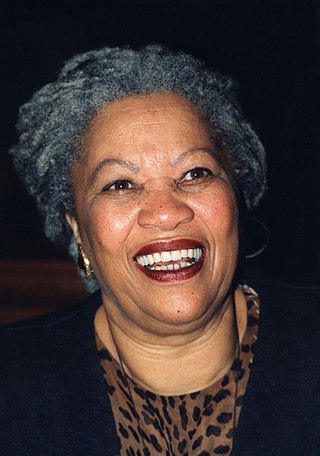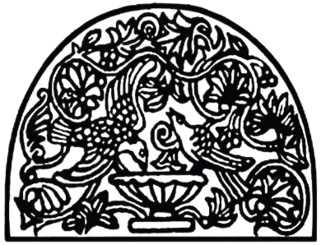
Saul Bellow was an American writer. For his literary work, Bellow was awarded the Pulitzer Prize, the 1976 Nobel Prize in Literature, and the National Medal of Arts. He is the only writer to win the National Book Award for Fiction three times, and he received the National Book Foundation's lifetime Medal for Distinguished Contribution to American Letters in 1990.

Chloe Anthony Wofford Morrison, known as Toni Morrison, was an American novelist and editor. Her first novel, The Bluest Eye, was published in 1970. The critically acclaimed Song of Solomon (1977) brought her national attention and won the National Book Critics Circle Award. In 1988, Morrison won the Pulitzer Prize for Beloved (1987); she was awarded the Nobel Prize in Literature in 1993.

Alice Ann Munro was a Canadian short story writer who won the Nobel Prize in Literature in 2013. Her work tends to move forward and backward in time, with integrated short story cycles.

Gerard Joseph Malanga is an American poet, photographer, filmmaker, actor, curator and archivist.

Kevin Young is an American poet and the director of the Smithsonian Institution National Museum of African American History and Culture since 2021. Author of 11 books and editor of eight others, Young previously served as Director of the Schomburg Center for Research in Black Culture at the New York Public Library. A winner of a Guggenheim Fellowship as well as a finalist for the National Book Award for his 2003 collection Jelly Roll: A Blues, Young was Atticus Haygood Professor of English and Creative Writing at Emory University and curator of Emory's Raymond Danowski Poetry Library. In March 2017, Young was named poetry editor of The New Yorker.
Push Pin Studios is a graphic design and illustration studio founded by the influential graphic designers Milton Glaser and Seymour Chwast in New York City in 1954. The firm's work, and distinctive illustration style, featuring "bulgy" three-dimensional "interpretations of historical styles ,"made their mark by departing from what the firm refers to as the "numbing rigidity of modernism, and the rote sentimental realism of commercial illustration." Eye magazine contextualized the results in a 1995 article for their "Reputations" column:
In an era dominated by Swiss rationalism, the Push Pin style celebrated the eclectic and eccentric design of the passé past while it introduced a distinctly contemporary design vocabulary, with a wide range of work that included record sleeves, books, posters, corporate logotypes, font design and magazine formats.

Boston Review is an American quarterly political and literary magazine. It publishes political, social, and historical analysis, literary and cultural criticism, book reviews, fiction, and poetry, both online and in print. Its signature form is a "forum", featuring a lead essay and several responses. Boston Review also publishes an imprint of books with MIT Press.

World Literature Today (WLT) is an American magazine of international literature and culture, published at the University of Oklahoma. The magazine's stated goal is to publish international essays, poetry, fiction, interviews, and book reviews for a non-academic audience. It was founded under the name Books Abroad in 1927 by Roy Temple House, a professor at the University of Oklahoma. In January 1977, the journal assumed its present name, World Literature Today.

Daniel Alarcón is a Peruvian-American novelist, journalist and radio producer. He is co-founder, host and executive producer of Radio Ambulante, an award-winning Spanish language podcast distributed by NPR. Currently, he is an assistant professor of broadcast journalism at the Columbia University Graduate School of Journalism and writes about Latin America for The New Yorker.
Michigan History is a bimonthly state history magazine published by the Historical Society of Michigan in Lansing, Michigan. It was founded in 1917 as a “magazine of Michigan history for Michigan people by Michigan writers.” Since then, it has expanded into a full-color, 68-page international publication with a subscription base of over 20,000 and a total readership of nearly 100,000.

TriQuarterly is a name shared by an American literary magazine and a series of books.

The Massachusetts Review is a literary quarterly founded in 1959 by a group of professors from Amherst College, Mount Holyoke College, Smith College, and the University of Massachusetts Amherst. It receives financial support from Five Colleges, Inc., a consortium which includes Amherst College and four other educational institutions in a short geographical radius.
New York Woman was a magazine that blended features on fashion and the arts, literary and humorous essays, and consumer-oriented services pieces such as reviews of restaurants, shops or films. Its target audience was intelligent women living in the New York Metropolitan area. It was launched as a bimonthly by the Esquire Magazine Group Inc. in 1986. The first issue was published in September–October of that year. The mergers-and-acquisitions specialist Bruce Wasserstein of Wasserstein Perella reportedly brokered the magazine's sale to American Express Publishing, publisher of Travel + Leisure and Food & Wine.
Melissa Febos is an American writer and professor. She is the author of the critically acclaimed memoir Whip Smart (2010) and the essay collections Abandon Me (2017) and Girlhood (2021).

Nat. Brut is an American literary magazine founded in 2012 by Anna Ploegh and Andrew Ridker. The magazine contains artwork, prose, and poetry by a set of diverse artists and is publicized both online and in print. The most recent issue is Issue 14, which features a folio by incarcerated writers in New Jersey entitled "Inside Voices," as well as poetry, fiction, essay, and visual art.
Burton Emmett was an advertising copywriter and executive in New York City.

Museum of Literature and Theater Arts of Bosnia and Herzegovina is a literary art museum in Sarajevo, Bosnia and Herzegovina. It was established under the name Museum of Literature of Bosnia and Herzegovina in 1961 on the idea of then curator of literary collections in the Museum of Sarajevo, writer Razija Handžić, the future director. In 1970, the Theater Department was founded and added to the Museum of Literature.












